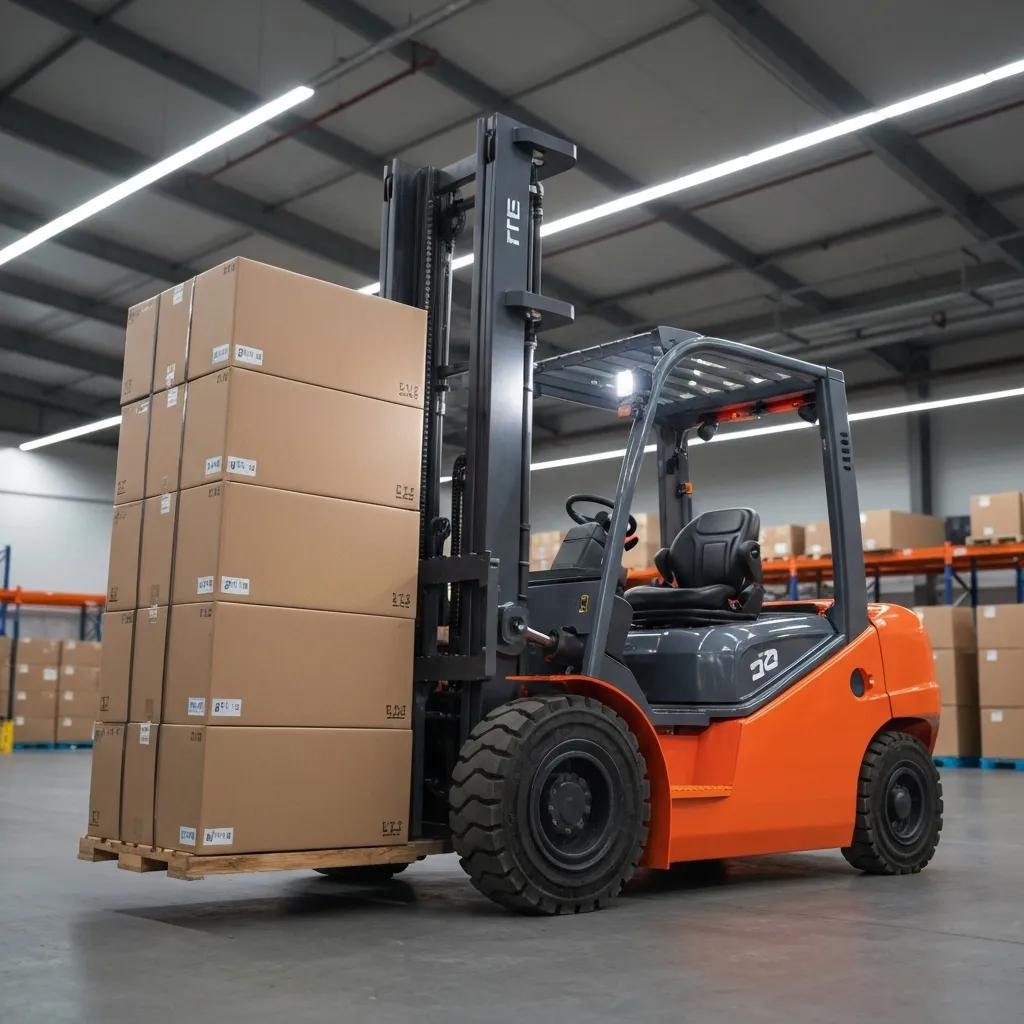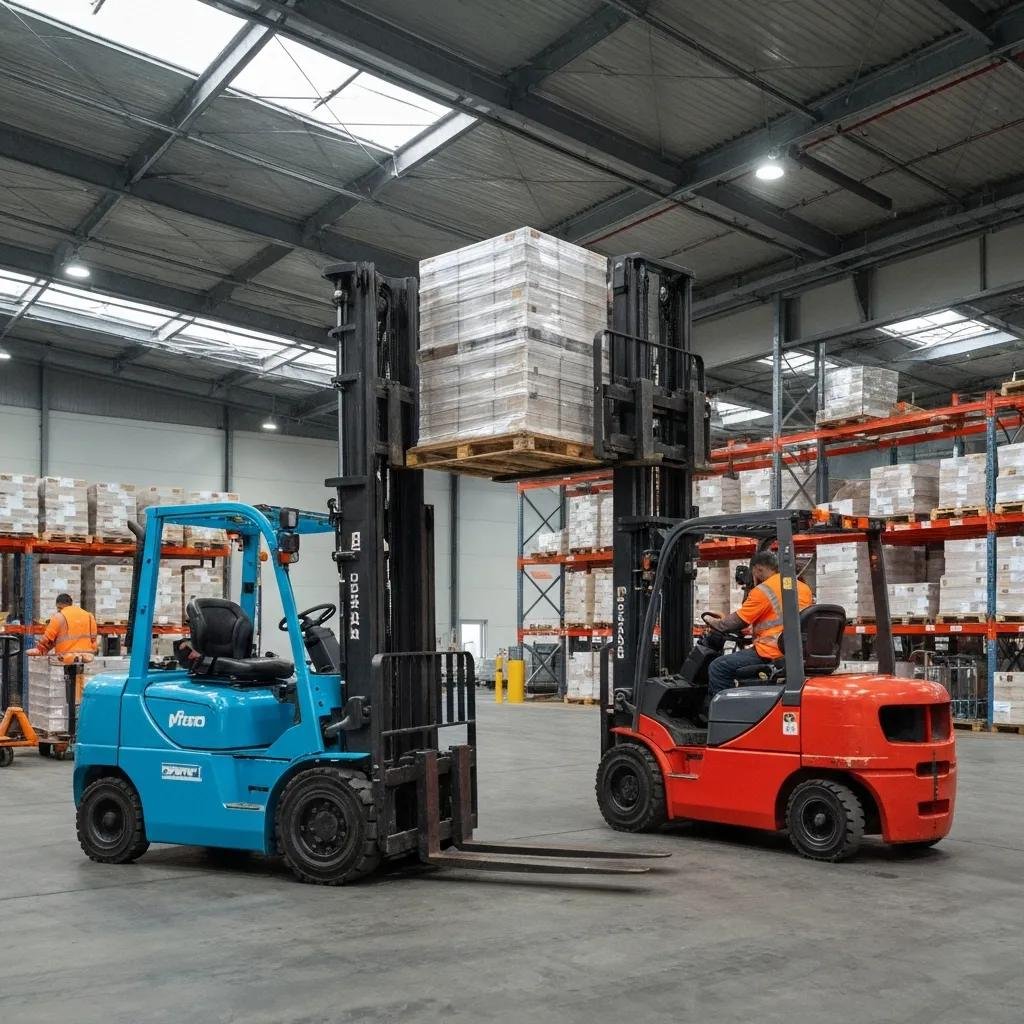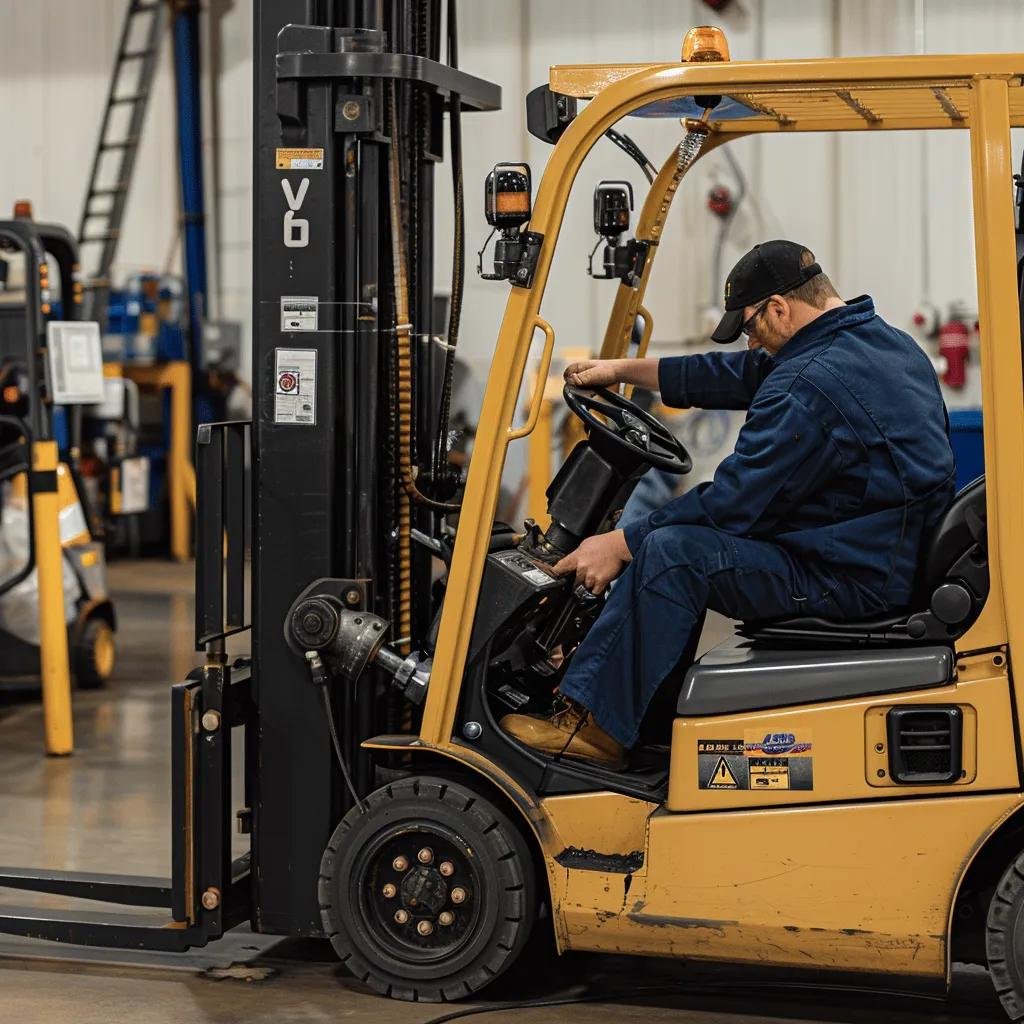
Understanding Forklift Warranty Coverage: Are Forklift Repairs Included in Your Original Purchase Price?
A forklift warranty is a manufacturer’s promise to repair or replace specified components that fail due to defects in materials or workmanship, and the central question many fleet managers ask is whether repairs are effectively included in the original purchase price. This article explains forklift warranty coverage, distinguishes basic and powertrain warranties, and shows how coverage is measured in years and operational hours. You will learn what is typically covered, common exclusions that shift repair costs back to owners, and the preventative maintenance practices that preserve warranty validity. The guide also compares extended warranty and service agreement options, outlines the practical steps in a warranty claim process, and provides local next steps for businesses in Houston and Humble, TX. Throughout, keywords like forklift warranty coverage, forklift warranty exclusions, and forklift warranty repairs Houston are used to help you find the exact answers you need and prepare for an efficient claim process.
What Does a Standard New Forklift Warranty Cover?
A standard new forklift warranty usually splits into component-focused categories that define which parts and repairs the manufacturer will cover and why those groupings matter for owners. The warranty functions by allocating risk: manufacturers accept defects-based risk while owners accept wear-and-tear and operational risk. This arrangement delivers value because major manufacturing defects — not routine maintenance items — are repaired under the warranty, which lowers unexpected capital outlay during the warranty term. Understanding these categories helps you plan maintenance, purchasing decisions, and risk transfer through extended plans or service agreements.
Different warranty categories clarify what owners can reasonably expect:
- Basic Warranty: Covers non-powertrain components such as electrical systems, control modules, and body components for a specified term.
- Powertrain Warranty: Focuses on engine, transmission, hydraulic pumps, and other drivetrain components where failure has major operational impact.
- Limited/Used Forklift Warranty: Often shorter and more conditional, covering select components and requiring inspection before transfer.
The table below compares typical warranty types and their common attributes to make selection and planning easier.
| Warranty Type | Attribute | Typical Value |
|---|---|---|
| Basic Warranty | Duration | 1 year or ~2,000 hours (varies by OEM) |
| Powertrain Warranty | Parts Covered | Engine, transmission, hydraulic pump |
| Manufacturer Defect Warranty | Labor Included | Often included for covered failures during term |
This comparison shows that manufacturers separate routine wear exposures from defect liability, which directly affects which repairs are “included” as part of the purchase price. These distinctions lead into the specific differences between basic and powertrain scopes.
What Are the Differences Between Basic and Powertrain Warranty Coverage?

Basic and powertrain warranties serve different risk profiles and thus cover different components and failure modes. The basic warranty typically addresses electrical systems, controllers, and structural defects that impair function but do not stem from the drivetrain. In contrast, the powertrain warranty protects the systems that move and lift loads—engine, transmission, axles, and major hydraulics—because failures there impose larger replacement and downtime costs. Examples clarify the distinction: a failed control relay or defective sensor often falls under basic coverage, while an internal transmission failure that stems from a manufacturing defect would fall under powertrain protection. Understanding these differences helps fleet managers prioritize preventative maintenance and documentation to ensure valid claims.
How Long Do New Forklift Warranties Typically Last?
Manufacturers usually express warranty length in a combination of elapsed time and operational hours because forklifts’ usage intensity varies greatly across industries. Typical ranges might be one to two years or 2,000–4,000 hours for basic warranties and up to three years or 6,000 hours for powertrain coverage, though exact terms vary by model and OEM. Factors that alter warranty length include intended application, resale status (new vs. used), and negotiated dealer incentives at purchase. Knowing how terms are measured helps you track coverage and plan service intervals before warranty expiration.
Are Forklift Repairs Included in Your Original Purchase Warranty?
The simple answer is: sometimes — repairs are included only if the failure results from a covered defect, the repair falls within the warranty term, and claim conditions are met. Manufacturer defect coverage typically includes repairs for parts and labor that meet the warranty’s scope, but claims are conditional on documented maintenance, use of OEM parts where required, and authorized service by approved technicians. This conditional model means that while the purchase price includes an expectation of defect remediation, owners still bear responsibility for maintenance and proof that the failure was not due to misuse. Knowing the conditional nature of coverage helps you prepare documentation and choose service partners that preserve claim eligibility.
Below is an EAV-style table listing common repair types, whether they are usually covered, and typical caveats to watch for when filing a claim.
| Repair Category | Covered? (Typical) | Common Caveats |
|---|---|---|
| Manufacturer defect in powertrain | Yes (if within term) | Requires maintenance records and OEM parts |
| Electrical/control module failure | Yes (if defect-based) | May need OEM diagnostic verification |
| Wearable parts (tires, forks, brake pads) | No | Excluded as normal wear and tear |
| Damage from misuse/operator error | No | Coverage denied if abuse is documented |
When preparing claims, follow these steps to increase the likelihood of coverage:
- Keep clear maintenance logs and service receipts showing scheduled work.
- Use OEM or manufacturer-approved parts where the warranty requires them.
- Have failures diagnosed by authorized or certified technicians to obtain formal defect confirmation.
These practical steps transition naturally into the role preventative maintenance plays in preserving warranties and enabling successful claims.
For local help with diagnostics, documentation, and claim support, Upright Forklift Repair in Houston and Humble, TX can assist businesses that need quick on-site inspection and manufacturer liaison. Upright Forklift Repair positions itself as a lead-generation and information hub offering repair and maintenance services for major brands including Crown, Hyster, Komatsu, Toyota, and Yale. Their local technicians can perform warranty-focused diagnostics, help validate maintenance records, and coordinate repairs that meet manufacturer conditions, which can speed claim resolution and reduce downtime for Houston-area operators.
How Does Preventative Maintenance Affect Forklift Warranty Validity?

Preventative maintenance is often a contractual requirement in forklift warranties and serves as the primary means of demonstrating that failures were not caused by neglect. Regular maintenance preserves functional integrity, reduces the likelihood of failures, and supplies the documentation manufacturers use to validate claims. A consistent preventative maintenance program translates into a clear chain-of-custody for service actions, which protects warranty coverage and also extends operational life. The next subsection lists the specific tasks and record practices that typically satisfy warranty conditions and reduce the risk of claim denial.
Effective maintenance programs include these essential checkpoints:
- Daily operator pre-shift inspections: Visual checks and fluid level verifications to catch early signs of wear.
- Scheduled preventative service intervals: Lubrication, filter changes, and hydraulic inspections per OEM guidance.
- Detailed service records: Date-stamped entries, parts used, and technician notes stored centrally.
What Maintenance Is Required to Keep Your Forklift Warranty Intact?
Manufacturers typically require documented routine checks and scheduled servicing at specified hour or calendar intervals to keep warranties valid. Required maintenance often includes fluid and filter changes, hydraulic system inspections, brake and steering checks, and operator inspections logged daily. Accurate record-keeping should note dates, operating hours, parts installed (including OEM part numbers when used), and technician signatures or shop stamps. Following the manufacturer’s service schedule and keeping verifiable records reduces the administrative friction of a warranty claim and provides the traceability needed to show compliance.
Why Is Using OEM Parts Important for Warranty Compliance?
OEM parts are often specified in warranty terms because they match manufacturer specifications, preserve system tolerances, and maintain traceability for failure analysis. Using non-OEM parts can create compatibility issues that obscure root-cause analysis, and many manufacturers will deny claims if non-authorized parts contributed to a failure. When OEM parts are explicitly required, procurements should record part numbers, vendor invoices, and installation dates to document compliance. Prioritizing OEM components thus reduces the likelihood of denied claims and supports long-term reliability goals.
What Are Extended Forklift Warranty Options and Service Agreements?
Extended warranties and service agreements broaden protection beyond the original manufacturer terms by covering additional components, extending duration, or bundling preventative maintenance to reduce downtime risk. While manufacturer warranties address defects for a limited term, extended plans can cover wearable items, labor, travel, or priority response depending on contract specifics. Service agreements—preventative maintenance contracts—complement warranties by ensuring maintenance obligations are met and by offering predictable cost structures for routine work. Evaluating extended options requires weighing cost drivers, downtime risk, and whether the extended scope meaningfully reduces operating expenses over the asset’s life.
The table below compares common extended coverage options and service agreements to help managers evaluate tradeoffs between self-insurance and contracted protection.
| Coverage Option | Attribute | Typical Benefit |
|---|---|---|
| Extended Parts & Labor Plan | Term Length | Extends repair coverage beyond OEM time/hours |
| Wear Item Coverage | Scope | Covers consumables like forks and tires |
| Preventative Maintenance Agreement | Cost Structure | Predictable service costs and preserved warranty eligibility |
Choosing the right combination of extended warranty and service agreement often depends on operational intensity and the fleet manager’s appetite for variable repair costs. The next subsection explores how extended warranties specifically enhance coverage.
When you need local quotes or to evaluate a tailored service agreement, Upright Forklift Repair offers local assessments in Houston and Humble, TX and can provide on-site evaluations that demonstrate how a service contract complements manufacturer coverage. Upright Forklift Repair positions its offerings as a way to reduce downtime and ensure maintenance is documented to support warranty claims, helping businesses choose the combination of extended coverage and maintenance that matches their operations.
How Do Extended Warranties Enhance Your Forklift Coverage?
Extended warranties can lengthen the period during which parts and labor are covered, lower out-of-pocket expenses for major failures, and, in some plans, include roadside or on-site response. For high-utilization fleets, extended terms may provide financial predictability by capping repair costs, which is particularly valuable for powertrain failures with high replacement costs. The tradeoff is premium cost versus the frequency and severity of expected failures; in scenarios with high annual hours, extended coverage often pays for itself by mitigating a single catastrophic repair. Evaluating extended warranties should therefore focus on failure likelihood, cost per incident, and the contractual obligations for preventative maintenance.
How Do Service Agreements Complement or Extend Warranty Coverage?
Service agreements focus on preventative work—scheduled inspections, fluid changes, and wear-item monitoring—that both reduces failure risk and satisfies manufacturer maintenance requirements. When paired with a warranty, a service agreement ensures maintenance records are managed by qualified technicians, which minimizes claim friction and can prevent warranty denial. Common terms in these agreements include defined inspection intervals, labor coverage for routine tasks, and parts procurement channels, all of which contribute to uptime. For fleet managers, service agreements provide operational continuity and a single point of accountability for maintenance traceability and warranty compliance.
How to Navigate Forklift Warranty Repairs with Upright Forklift Repair in Houston and Humble, TX?
Using a local, experienced repair provider helps streamline warranty repair workflows by combining quick diagnostics with documentation support and OEM parts sourcing. Upright Forklift Repair serves Houston and Humble, TX, and focuses on maintenance and repair for major brands such as Crown, Hyster, Komatsu, Toyota, and Yale. Their technicians can perform warranty-focused inspections, document findings in standard formats, and coordinate with manufacturers or dealers to pursue repair authorization when a defect is suspected. Leveraging a local provider reduces transport time, expedites on-site remediation, and keeps service records consolidated for easier claim processing.
A typical warranty-compliant repair workflow with a local provider follows these steps:
- Initial diagnosis and inspection: Certified technician documents failure mode and operating hours.
- Documentation and evidence collection: Service history, photos, and parts invoices compiled to support a claim.
- Manufacturer liaison and authorization: The provider submits required materials to the OEM or dealer for approval.
- Repair with OEM-compliant parts and labor: Work proceeds once authorization confirms coverage.
Upright Forklift Repair supports these steps by offering local inspections and coordination for claims, and businesses in the Houston and Humble area can request an evaluation to determine whether a failure meets warranty conditions. Contact information and local presence help minimize downtime and keep repair history centralized for future claims.
How Does Upright Forklift Repair Support Warranty-Compliant Repairs?
Upright Forklift Repair provides diagnostics, maintenance documentation, and brand-specific repair expertise that align with manufacturer expectations for warranty claims. Their service includes validating whether a failure is defect-based, sourcing OEM or approved parts when required, and compiling the records manufacturers need to evaluate coverage. Because they service a range of brands—Crown, Hyster, Komatsu, Toyota, and Yale—their technicians understand manufacturer protocols and common failure modes across different powertrains and control systems. This local expertise reduces the back-and-forth typical in warranty cases and helps fleets recover operational capability faster.
What Are the Benefits of Choosing a Certified Local Repair Service for Warranty Claims?
Choosing a local certified repair service reduces administrative friction, shortens response times, and centralizes maintenance records that manufacturers review during claim adjudication. Local technicians provide faster on-site response, which limits lost productivity and often prevents secondary damage that complicates claims. Additionally, providers familiar with manufacturer processes can present claims in the format OEMs expect, improving approval rates. Firms that consolidate maintenance and warranty support with a local partner gain a practical advantage in uptime and predictable operating cost management.
What Are Common Questions About Forklift Warranty Coverage and Repairs?
Operators frequently ask whether wear items are covered, what actions void warranties, and how to file a claim while minimizing downtime and expense. Short, clear answers help field teams make immediate decisions and provide the right documentation to pursue coverage. The following subsections address two of the most common questions and include actionable prevention tips and local assistance options for ambiguous claim situations.
Common procedural steps for filing a warranty claim include:
- Documenting failure with photos and hour-meter readings.
- Preserving failed parts for inspection if requested.
- Submitting maintenance logs and part invoices alongside a technician diagnosis.
Are Wearable Parts Covered by Forklift Warranties?
Wearable parts such as forks, tires, brake pads, filters, and belts are typically excluded from manufacturer warranties because they degrade through normal use. Coverage for wear items is rare under original warranties but may be included in extended plans or service agreements that specifically list consumables. Owners concerned about wear-related expense should consider maintenance contracts that include consumables or set aside replacement budgets tied to usage hours. Proactive inspection and rotation strategies can extend the service life of wear items and minimize unplanned downtime.
What Voids a Forklift Warranty?
Several common conditions can void warranty coverage, including the use of non-OEM parts when OEM parts are required, failure to perform or document preventative maintenance, unauthorized modifications, and operator abuse or misuse. Avoiding these pitfalls involves adhering to the manufacturer’s maintenance schedule, using authorized parts and technicians when specified, and keeping clear, time-stamped records of all service actions. If a warranty denial is disputed, documented maintenance and technician reports are the primary evidence used to appeal decisions.
For help confirming coverage or filing a claim in Houston and Humble, Upright Forklift Repair can perform an inspection and prepare the documentation manufacturers typically request, serving as a practical local resource when coverage is unclear.
- Inspection Assistance: On-site review to determine whether an issue appears defect-related.
- Documentation Support: Compiling service history, photos, and diagnostic notes for claim submission.
- Manufacturer Coordination: Liaising with OEMs or dealers to pursue authorization when warranted.
These local services can bridge the gap between fleet operations and manufacturer processes, improving claim outcomes and preserving uptime.
